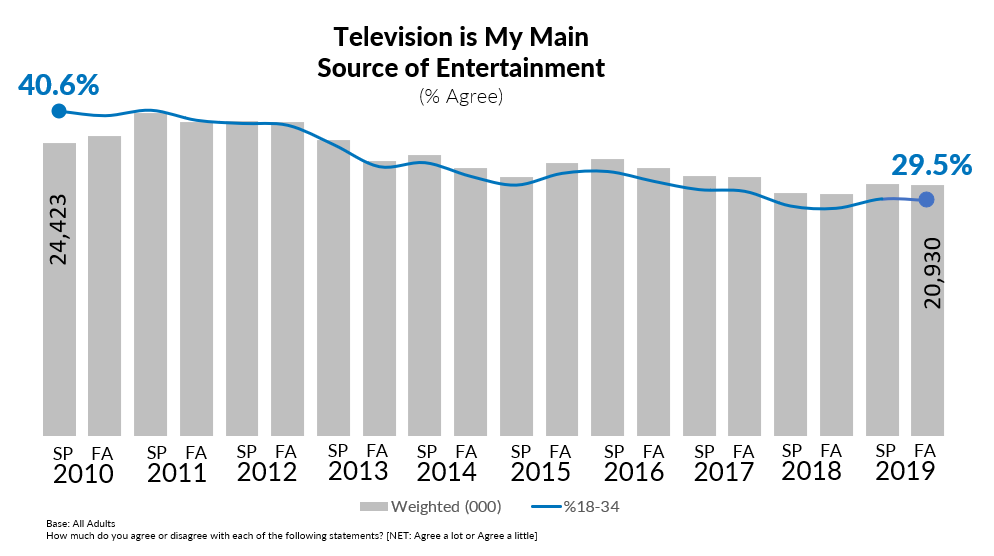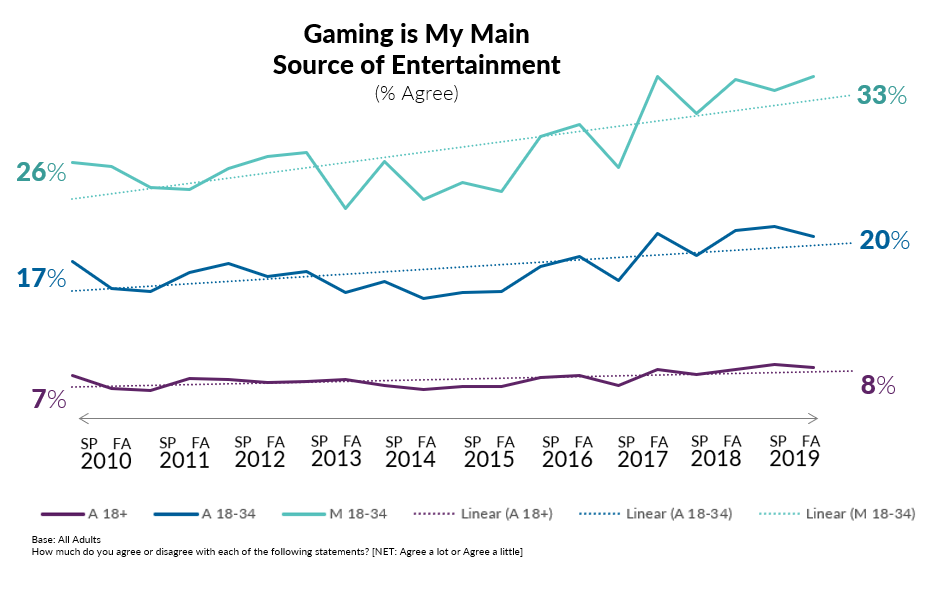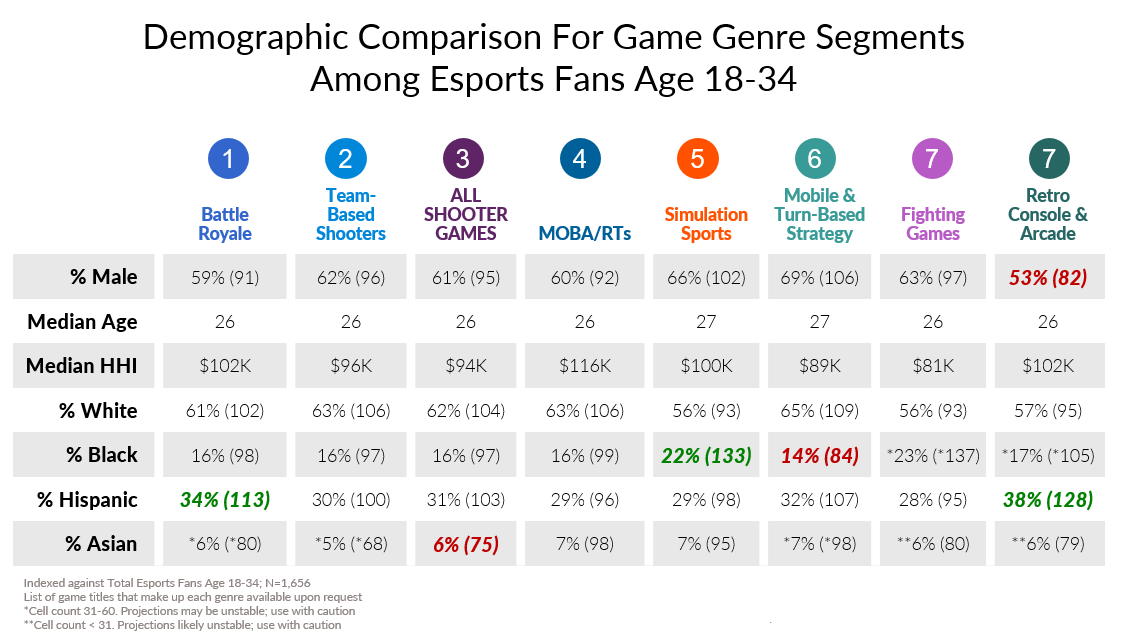Reaching the Elusive Young Male Audience Through Esports
If it’s July, it must be... opening day for baseball? Well, that is true this year, where it seems like a lot of things are different than they were before. But here at MRI-Simmons, July means the release of our newest Sports Fan Study, a comprehensive study of sports fandom in the US, covering all major professional sports leagues as well as collegiate sports, sports betting, and the star of this post, esports. So let’s take a look at some of our esports fans.
For certain brands, reaching the male 18-34 target is their holy grail. These young men are heavy users of a number of categories, ranging from video games to health and beauty aids to beverages and snack foods and more. But the television viewing habits of all adults 18-34 have changed in recent years, falling 27% from 2010 to 2019.

So what is the best way to reach this hard-to-find yet valuable audience of young men? We know that they are big fans of video games, and in fact, their use of video games has grown, in contrast to their TV habits.

And that is where the sweet spot of esports comes in. Through esports, companies have found a way to monetize this audiences’ passion for video games and build on the pop culturalization of gaming. Although esports is relatively new, there are 47 million esports fans in the US; of those, a whopping 26 million are aged 18-34 years old. In fact, among 18-34-year-olds, over one-third are fans of esports – a number that is bigger than that for Major League Soccer and NASCAR and approaching that of the National Hockey League.
Who are these esports fans? By the numbers, the audience tends to be young, male, affluent, and multicultural. They have a median age of 33 years, with 74% employed and a median household income of $85K. Nearly one-half (48%) report being never married, with 41% married. They are 30% more likely to be a parent, and, although 56% are homeowners, they are more likely than the adult population overall to be renters (index: 124). Digging a little deeper and looking at what drives our esports fans via the extensive battery of psychographics available within our Sports Fan Study, we know they tend to be unconventional thinkers – with a sense of adventure and curious minds, esports fans are open to new experiences and are influential among their friends.
But most importantly, when it comes to reaching this elusive audience, esports fans are more aware of and receptive to corporate sponsors. Compared with sports fans in general, they are more likely to notice brands that teams or athletes use or wear (67%; 134) and more likely to buy those brands (60%; 171). One-quarter say that they are more likely to notice brands that sponsor a favorite athlete, team, or league (154), and 54% say they are more likely to notice a brand that sponsors esports. In addition, esports fans are nearly twice as likely as adults overall to report the influence of ads on social media, and are also highly likely to be influenced by ads in video games. Specifically, esports fans report being influenced by logos on team uniforms (30%; 159), ads during tv sports (26%; 135), ads in sports video games (25%; 217); sponsorship mentions during a TV broadcast (24%; 147), and ads on team/league social media pages (24%; 190).
But as with regular sports, not all esports fans are the same. With the most recent wave of the MRI-Simmons Sports Fan study, we take a deep dive into the different types of esports games – and can take a peek here at who their fans are and what some of the differences are.

The MRI-Simmons Sports Fan Study is integrated with our national studies, which include over 60,000 additional data points with which to profile any audience you want to build. Through this linkage, you can look at demographics, psychographics, brand use and consumer behavior, and media behaviors and platform engagement.
To learn more about the gaming genres measured, esports fan motivations, and media habits of our esports fans, download our free report, Insights into Esports Fans, here, and find out more about our Sports Fan Study here.
Ben Paro, Account Director at MRI-Simmons, contributed to this blog post



